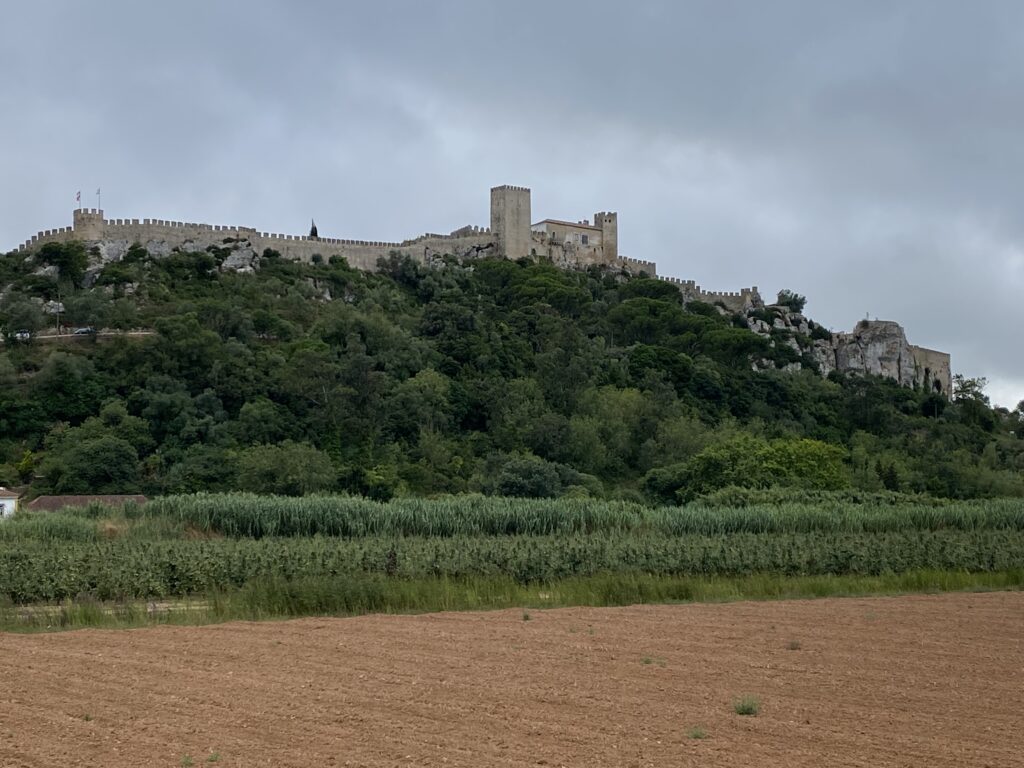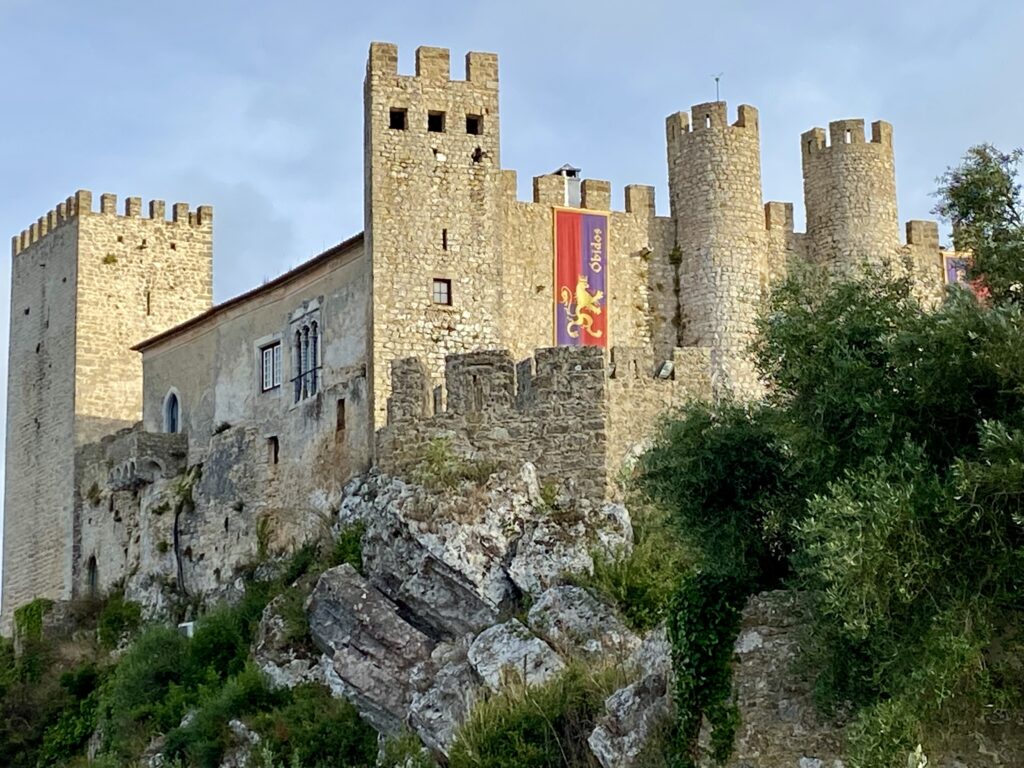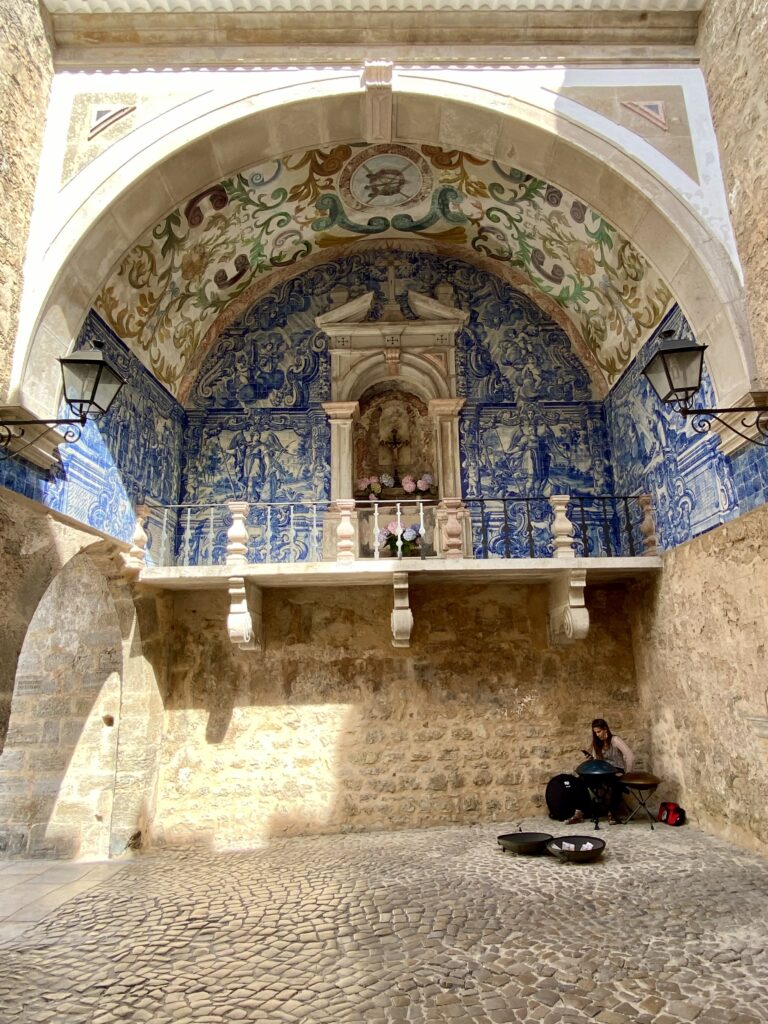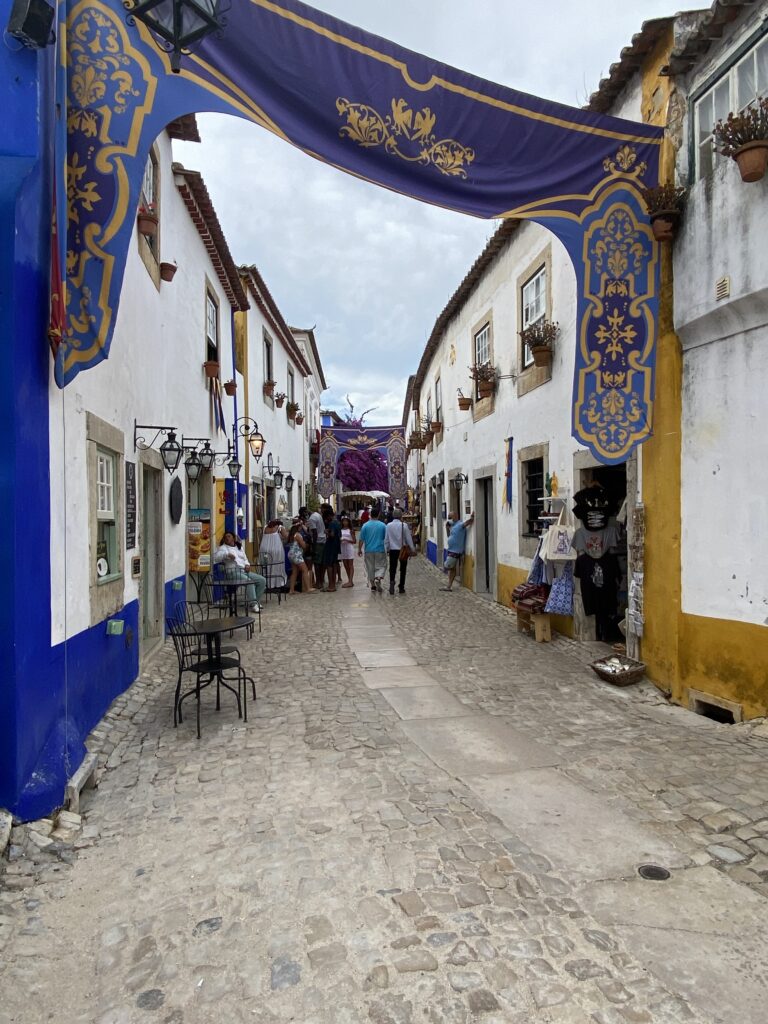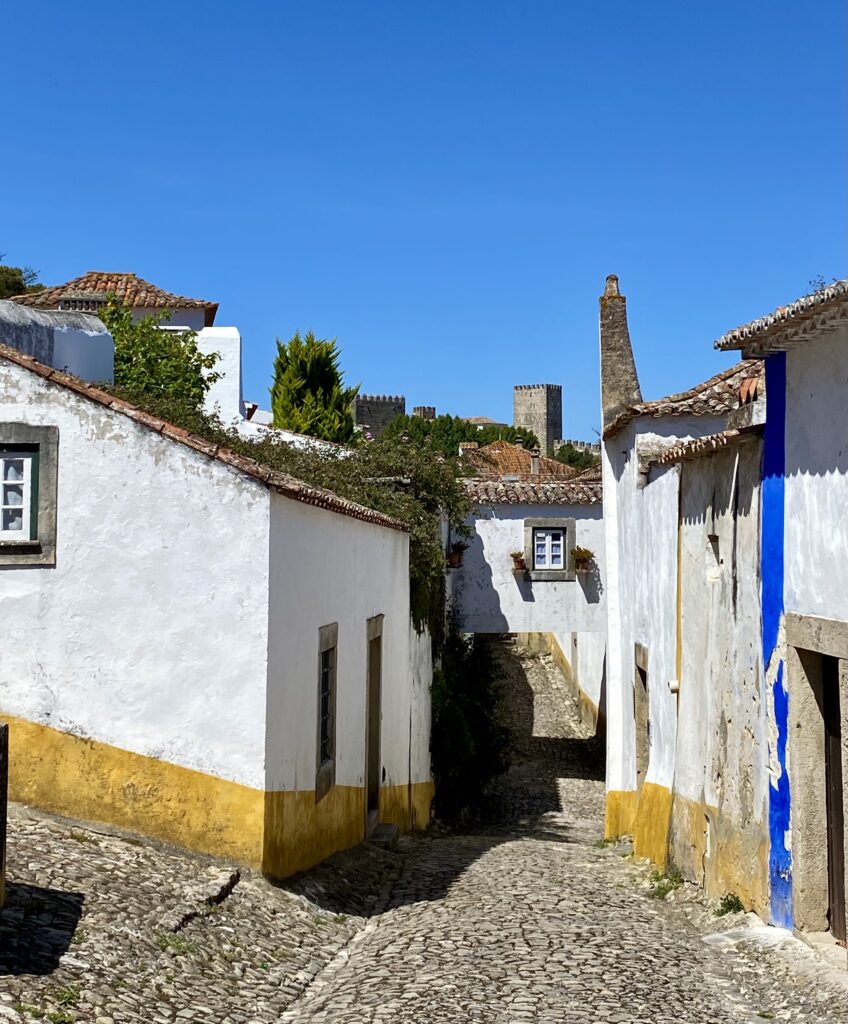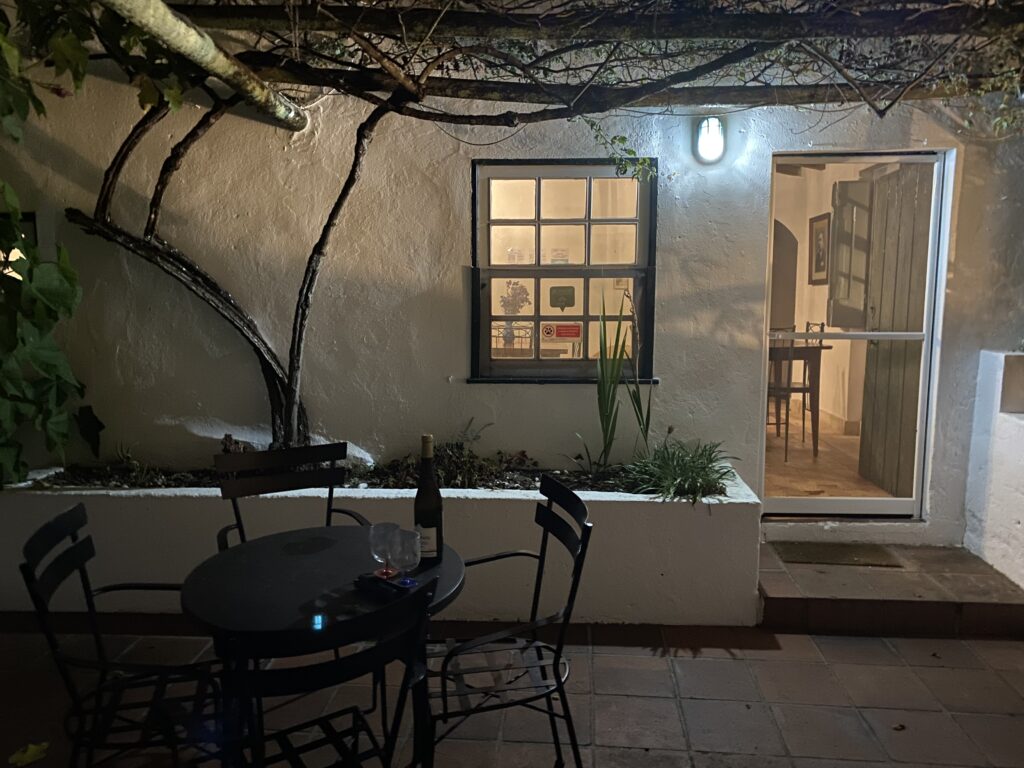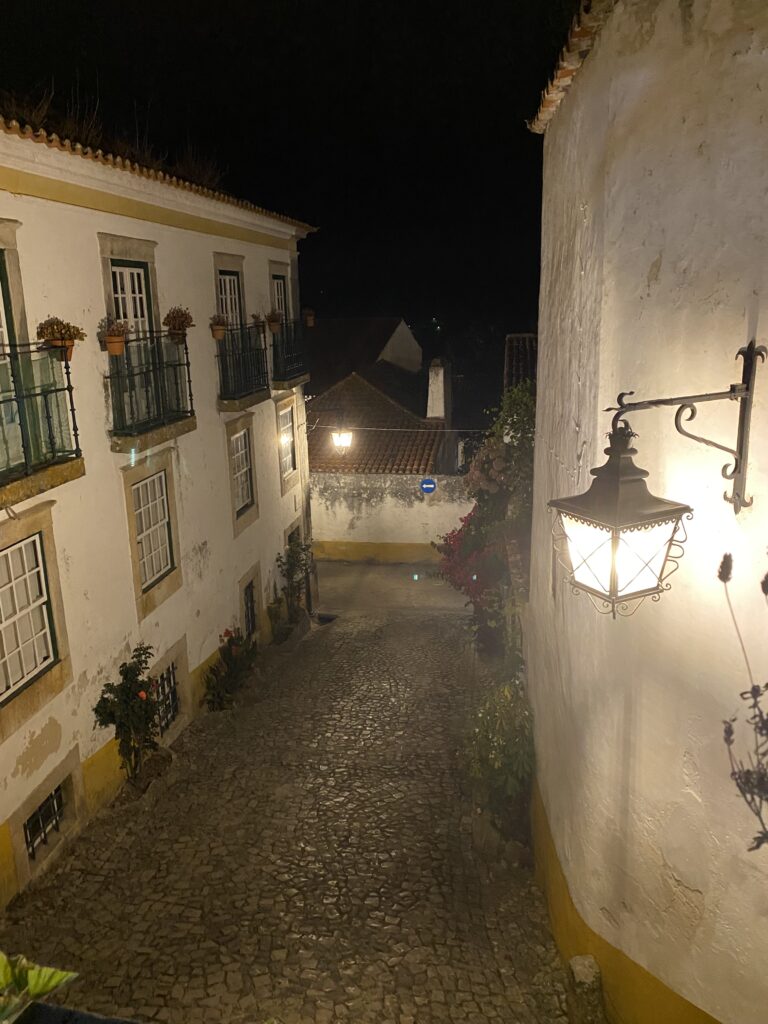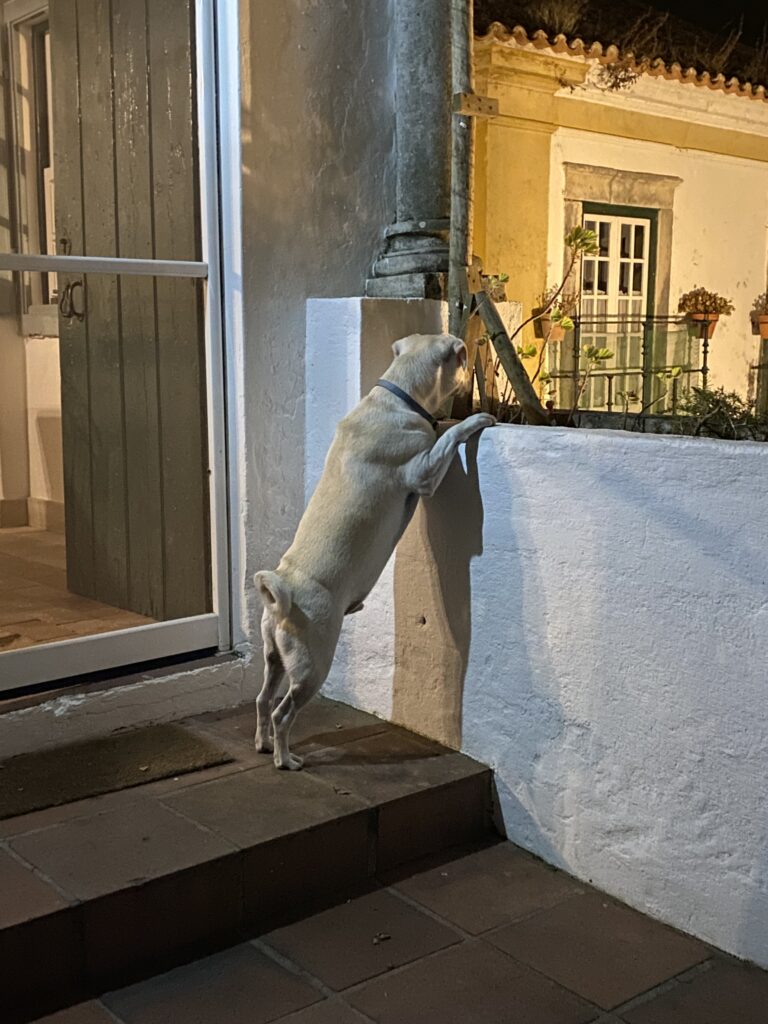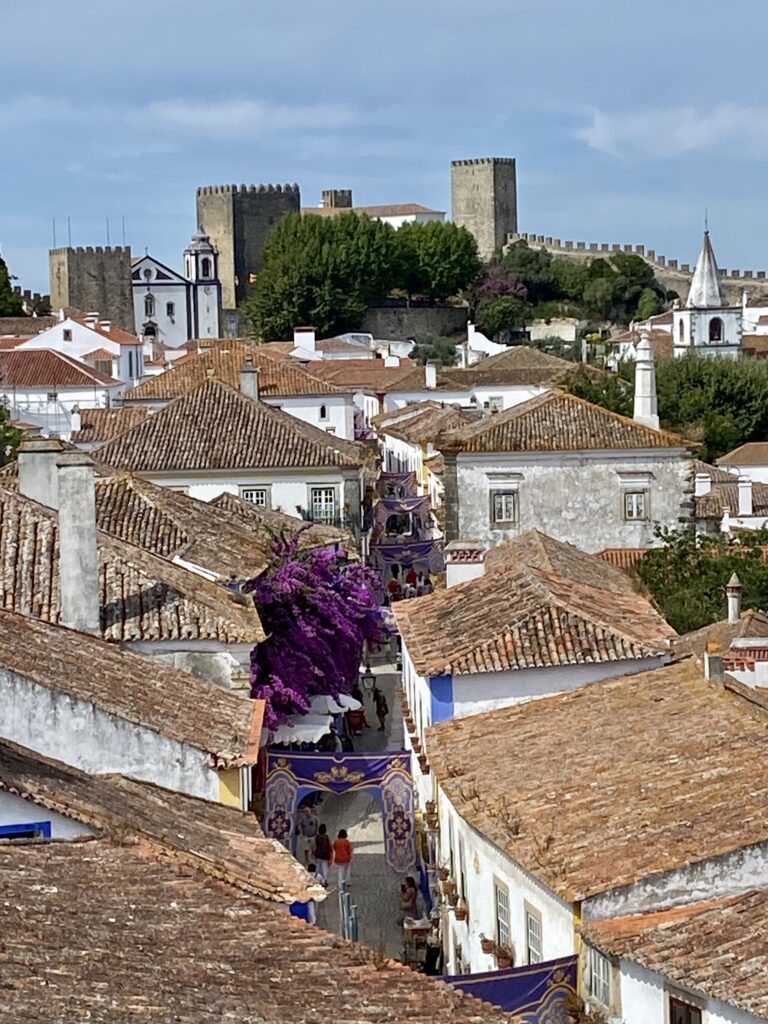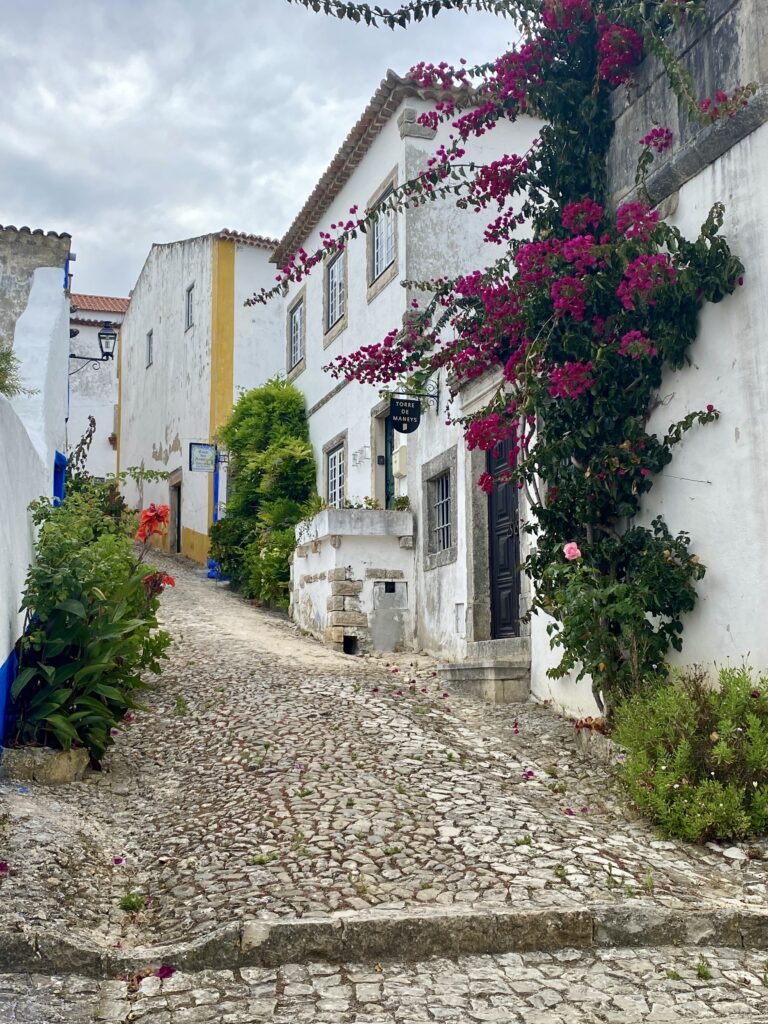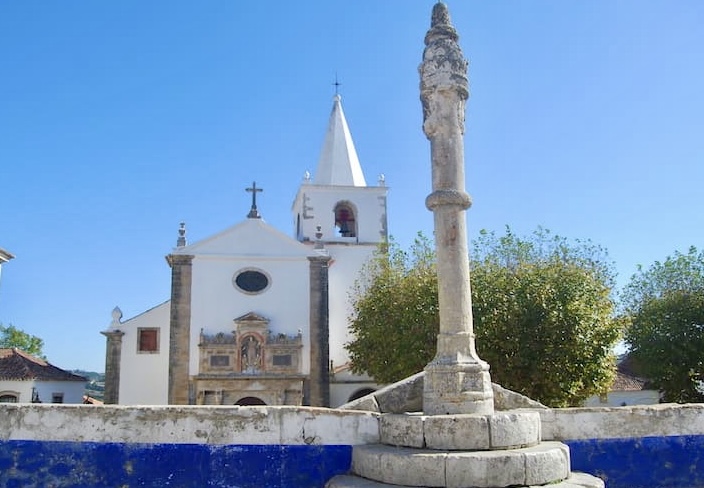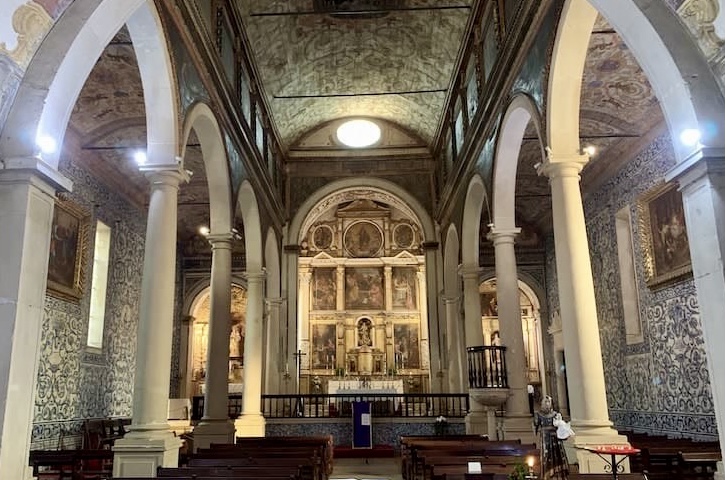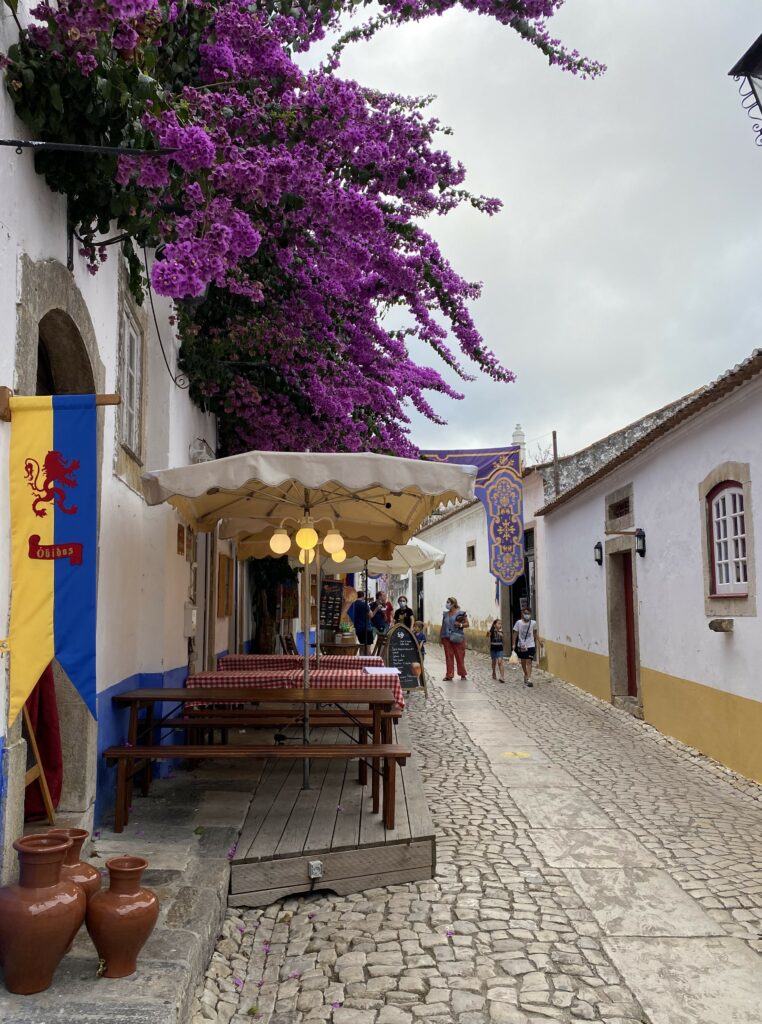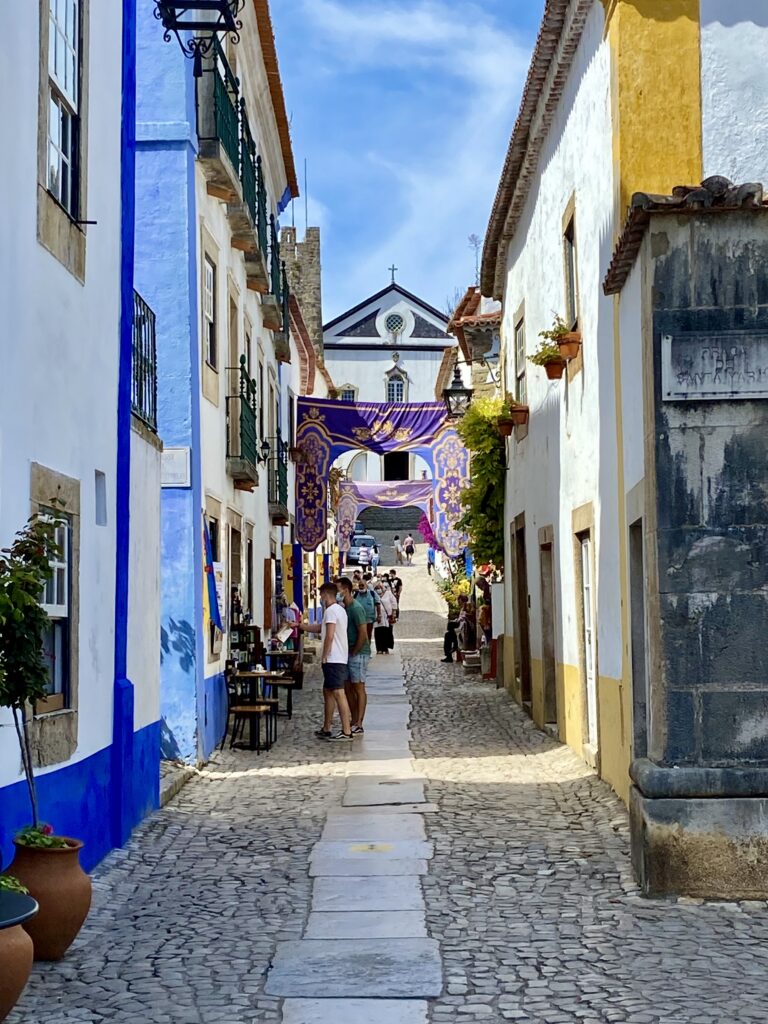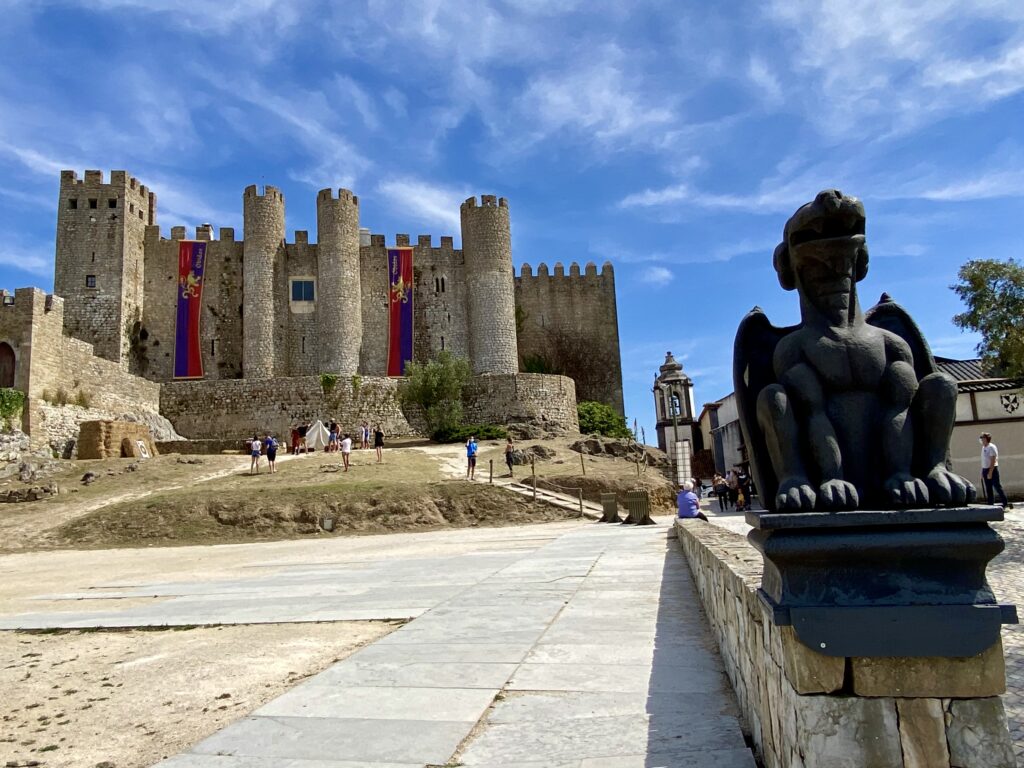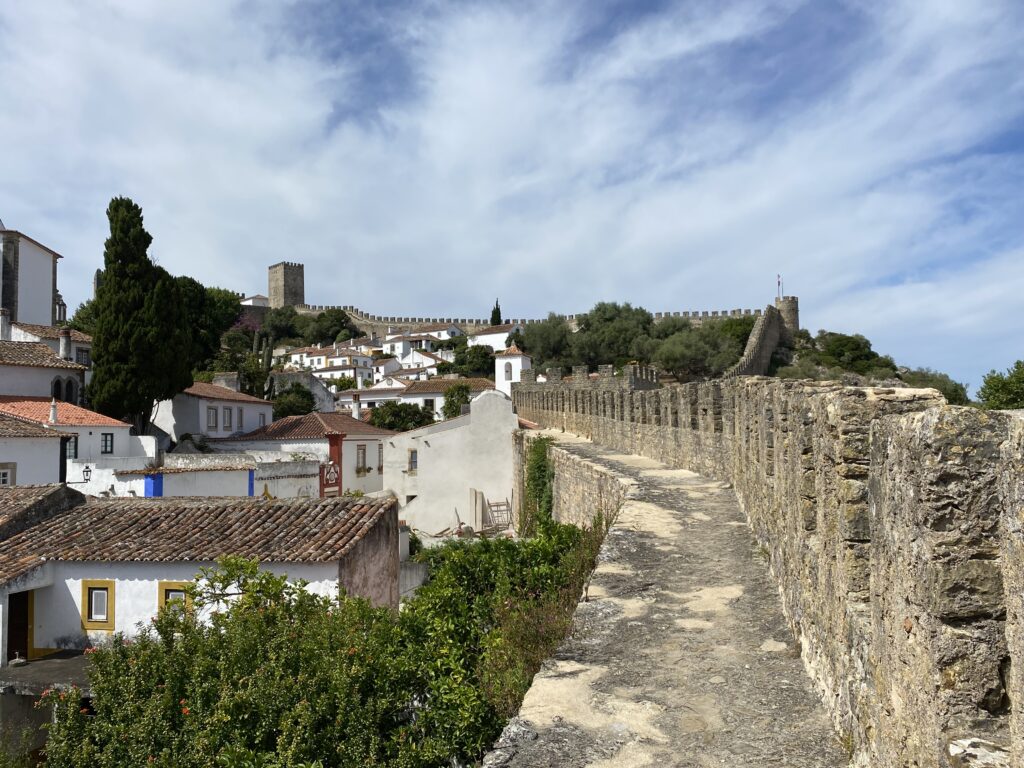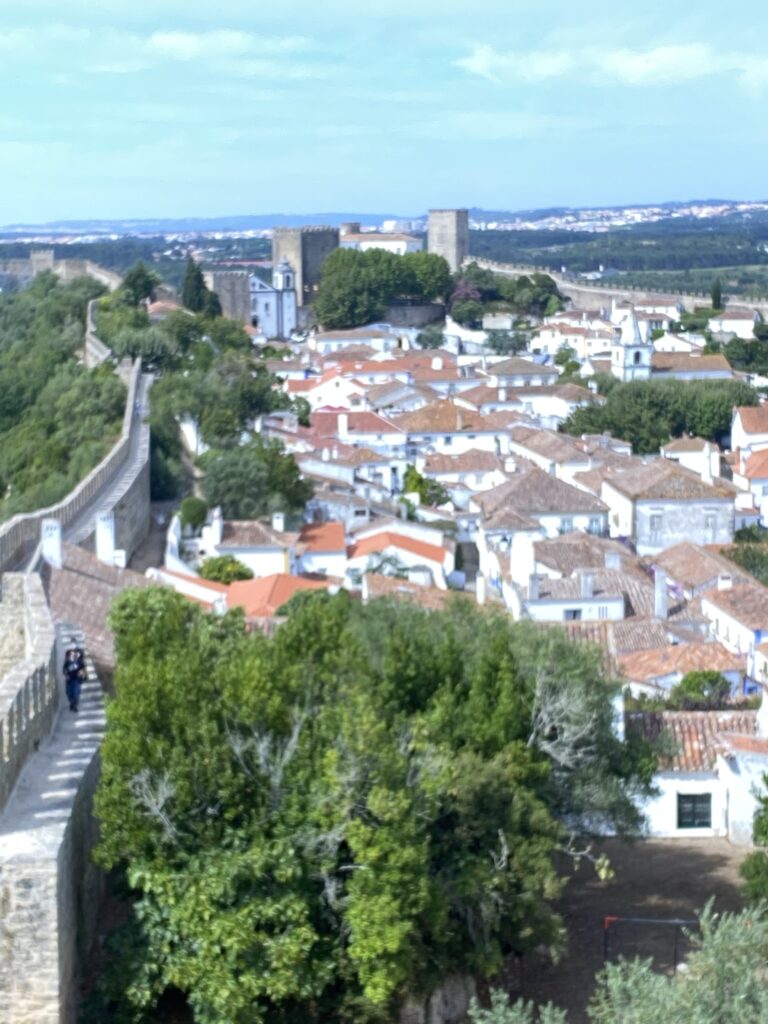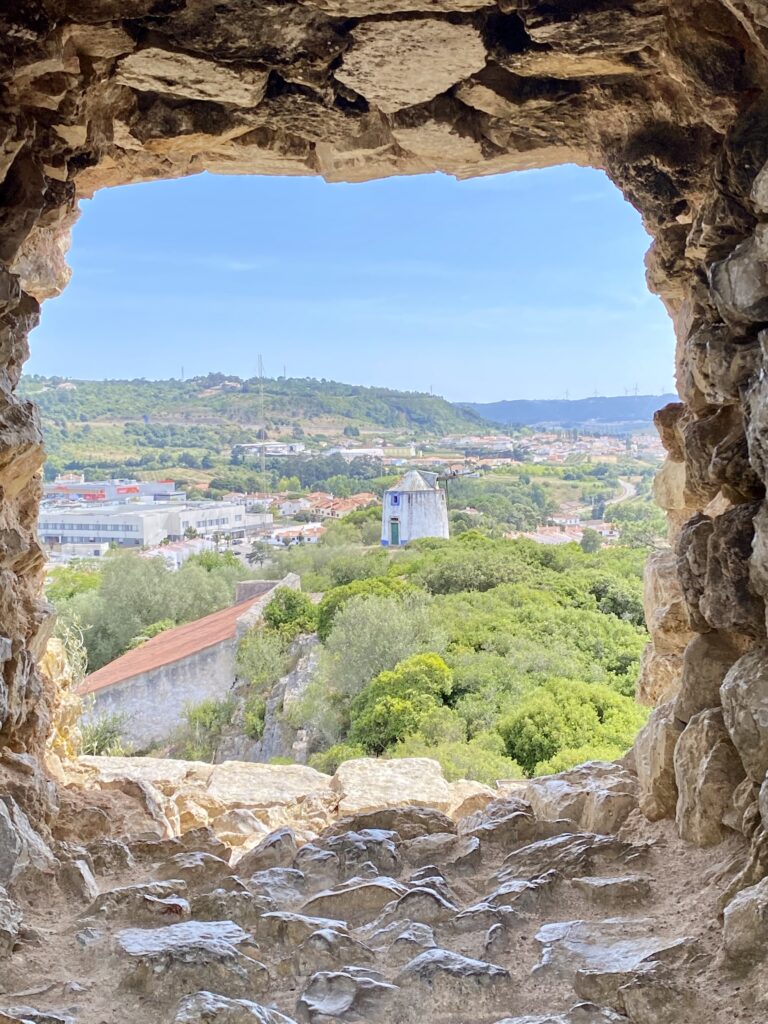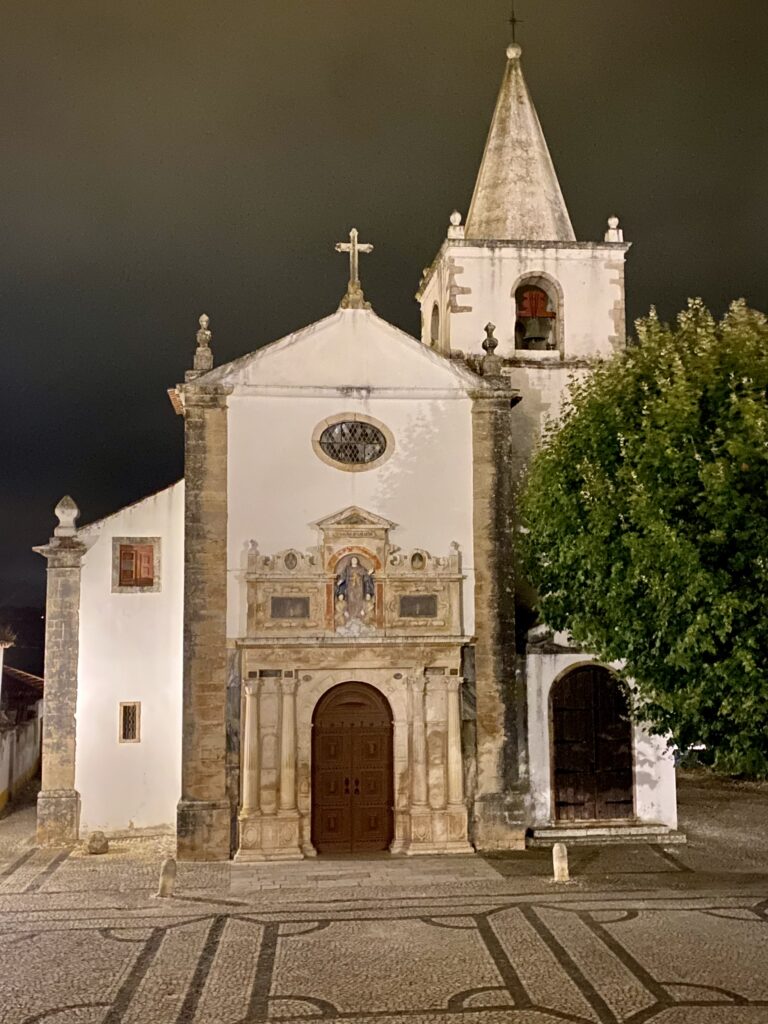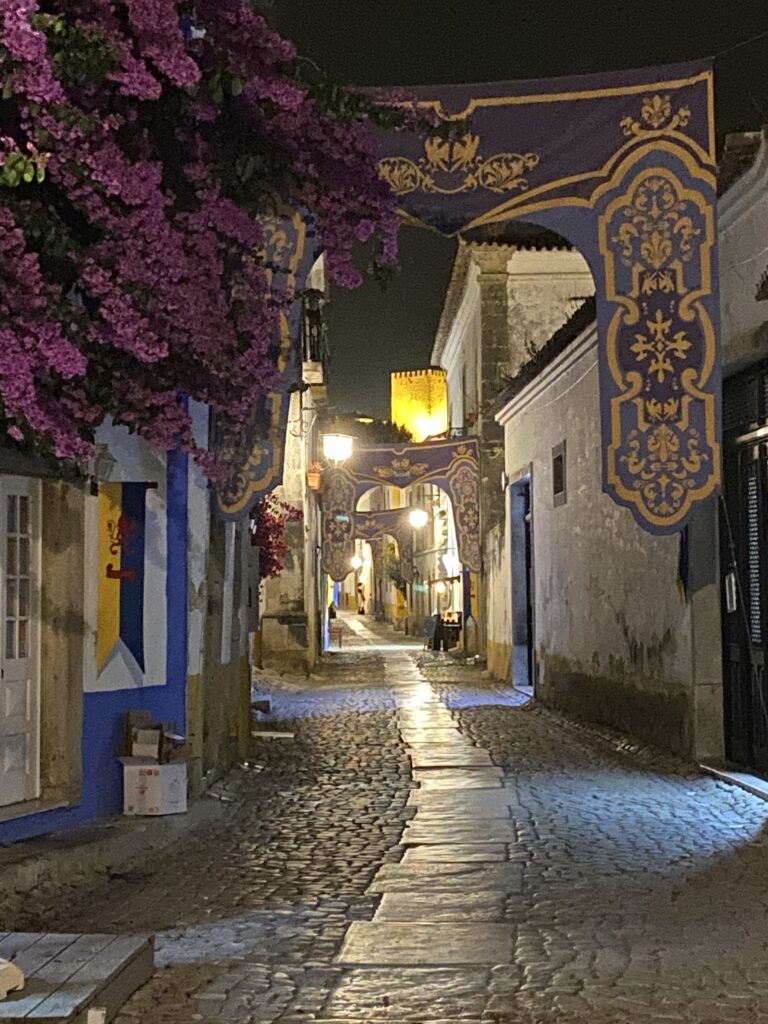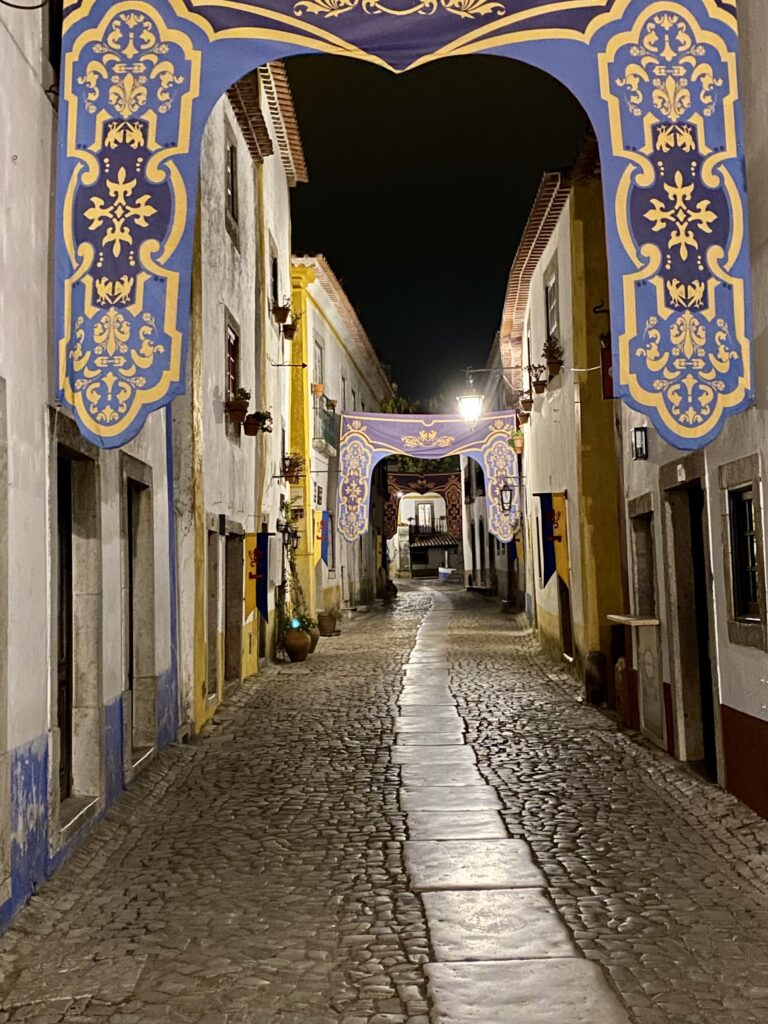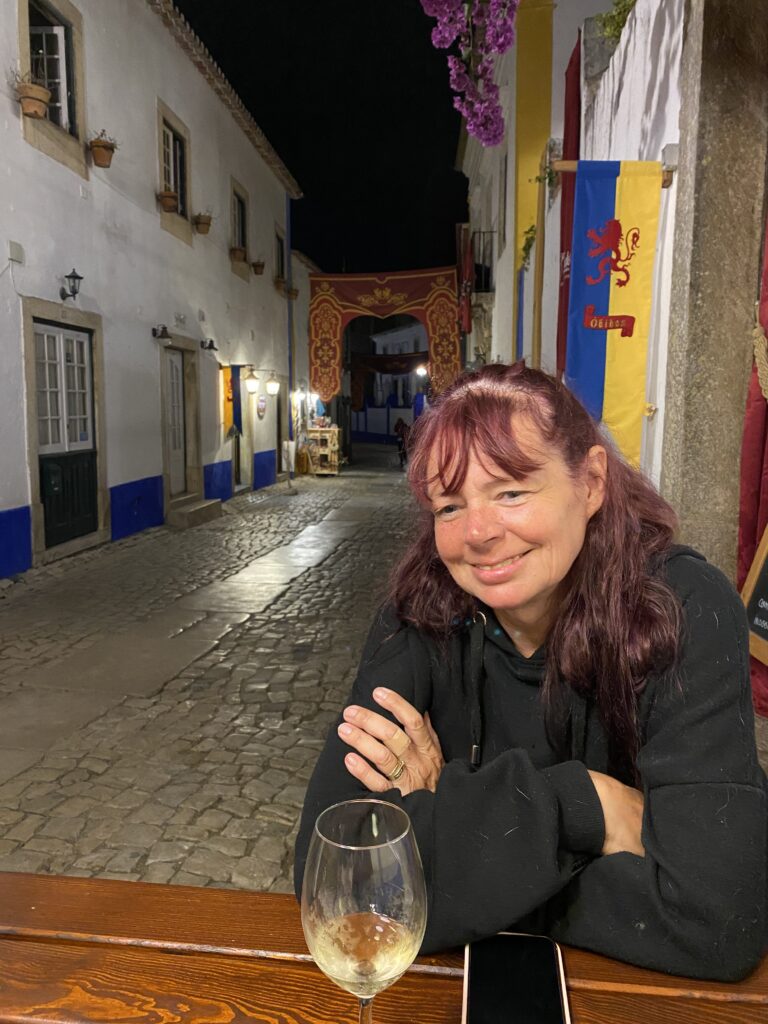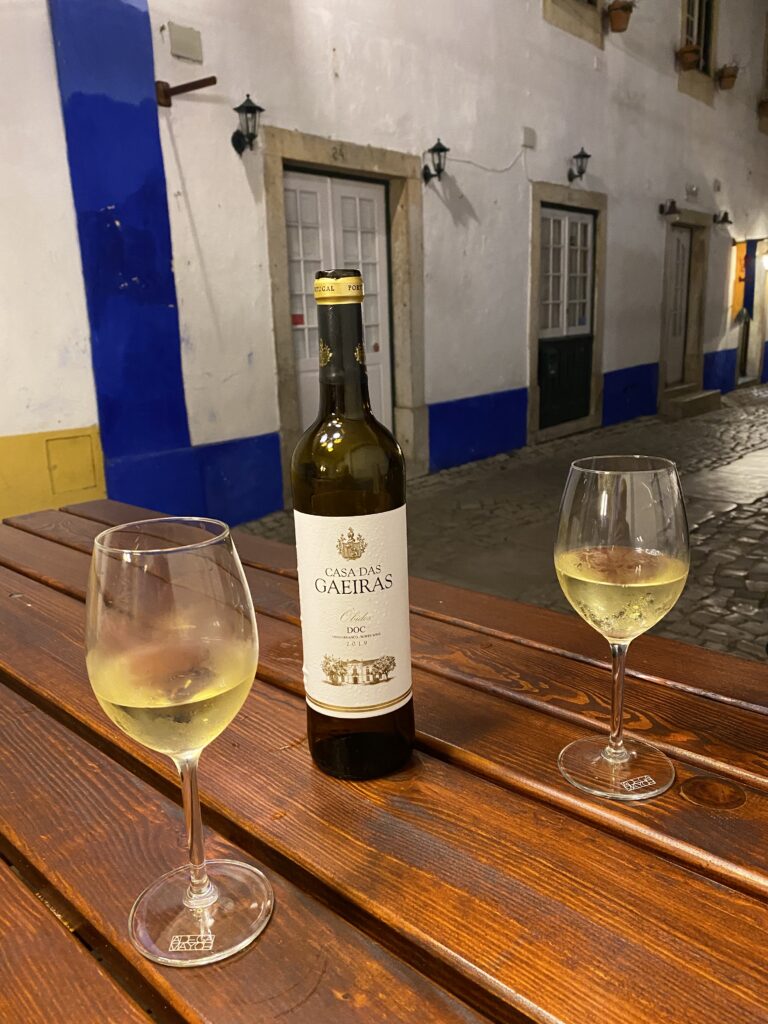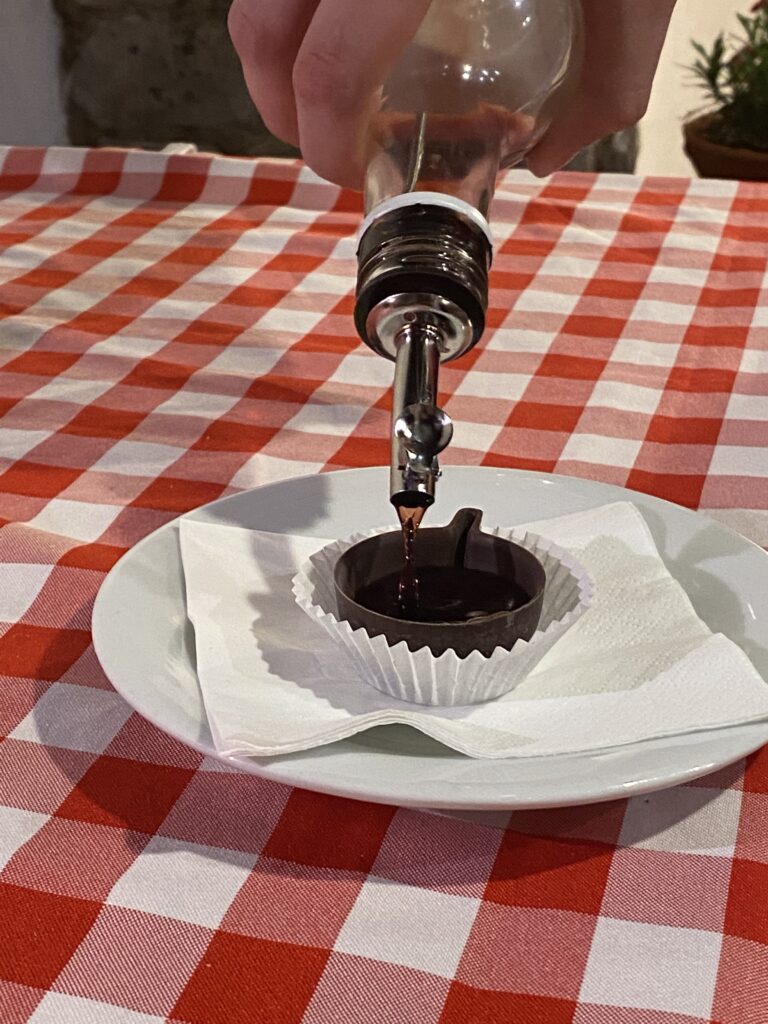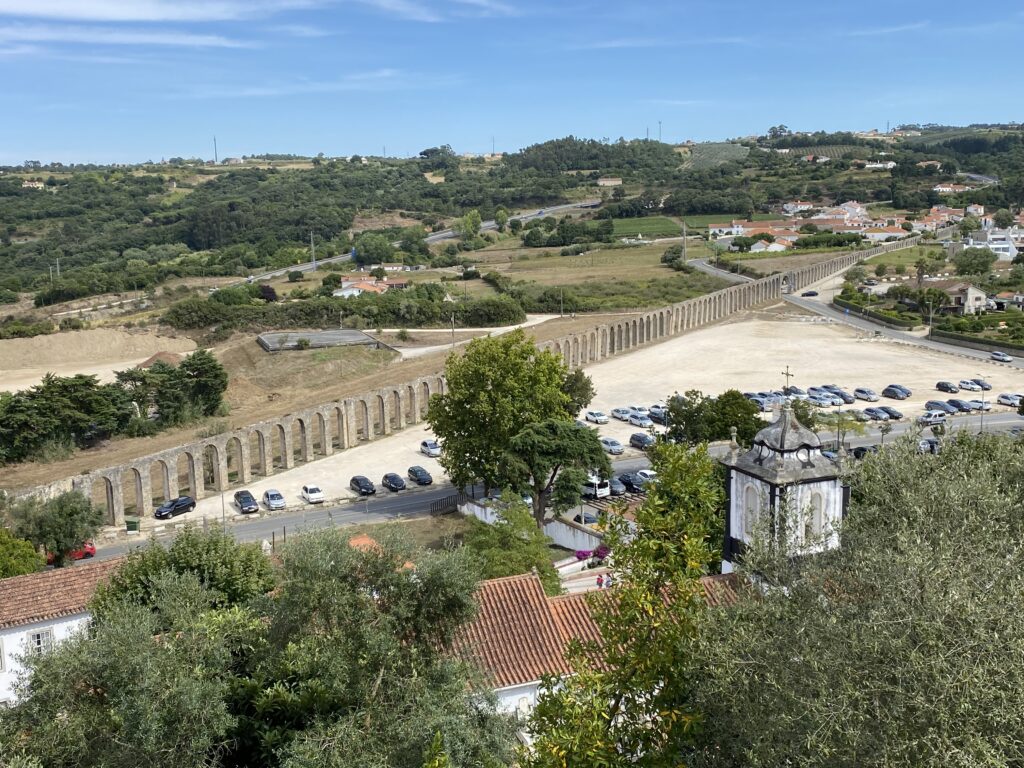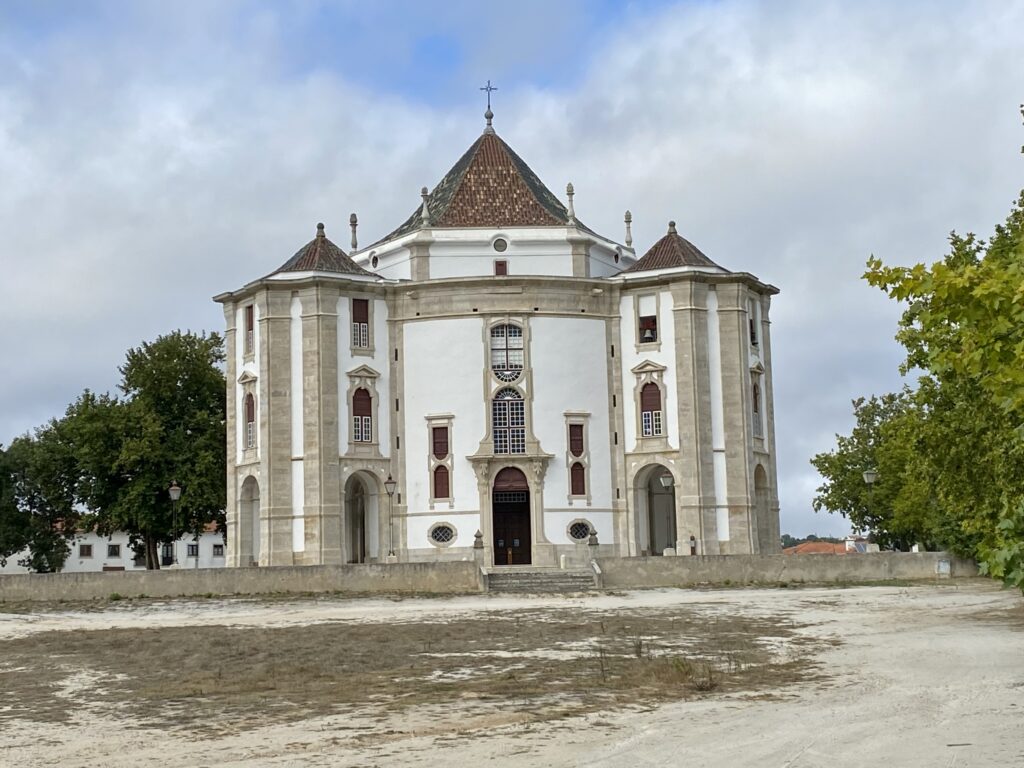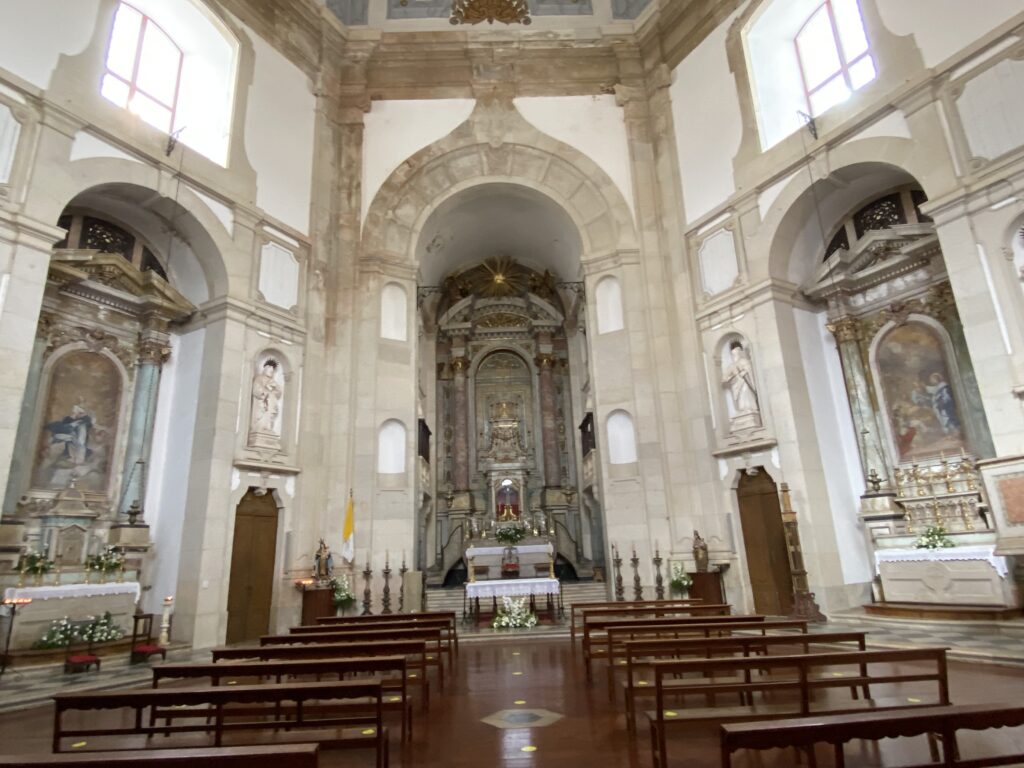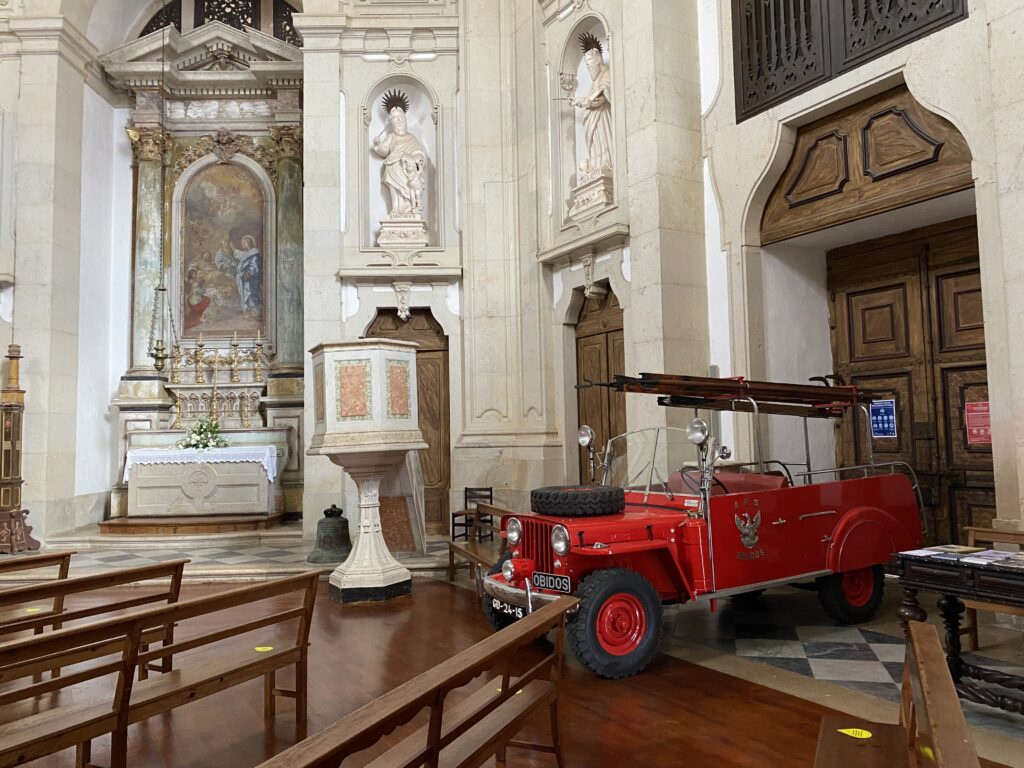What a wonderful place. We booked into a “hotel” in Obidos for two nights but almost immediately extended our stay to three.
Obidos is known as the Queen’s town. It was gifted to Queen Urraca of Leon by the Portuguese King Alfonso II in 1214, after she visited and fell in love with the place. This became a tradition which lasted until well into the 19th century with all subsequent queens being gifted the town on their wedding day.
Although there has been a settlement here since Roman times and the Visigoths and Moors held sway here for a while, most of the existing Obidos dates from the 13th century and the town is medieval at it’s best. Almost the whole town is enclosed within the castle walls and traditionally coloured (i.e. whitewashed with blue or yellow trim). It has been described as looking like a film set and it does. It is stunning!
From miles away you can see the castle and castle walls which encircle Obidos and I defy anyone not to get increasingly excited as they first approach the town and then pass through the castle gates into it’s incredible interior.
Inside the castle walls the town is wholly pedestrianised (except to residents) but there is ample parking for visitors and deliveries just outside the walls. We left the Van in a designated motorhome aire just two hundred yards or so from the town’s main gate. This main gate (Porta da Vila) is at the southern end of the town and has a tight double elbow entrance (to defy battering rams and cavalry in days of yore but which serve now only to limit entry to all but the smallest vehicles). Just inside the first elbow, well above head height, is a pretty Baroque chapel lined with blue and white Azulejos tiles portraying various religious scenes. It’s quite an entrance.
The second elbow in the main gate opens onto a narrow cobbled street (the Rue Direita) which is the main artery through the length of the town. From Porta da Vila the Rue Direita leads through the main square (Praca de Santa Maria) all the way to the castle. We weren’t to learn this until much later in the day as the directions to our hotel almost immediately took us off into a small alley to our left. Did I say hotel? Our accommodation, like almost all hotel accommodation in the old walled town, is a room within one of the small medieval houses that form Obidos. The only rooms which resemble anything like normal hotel rooms are those inside the old castle, which was transformed into a pousade (heritage hotel) a relatively short while ago.
Rue Direita has a handful of bars and restaurants but is filled mostly with craft & tourist shops selling ceramics, embroideries, wine and especially the local cherry liqueur Ginjinha d’Obidos (more of that later). The side streets and alleys leading off the main street are quite remarkable, often being filled with purple, red or mauve coloured bougainvillea scrambling more than 2 metres up the sides of some of the cottages.
Two thirds of the way down the Rue Direita is a small square (the Praca de Santa Maria) containing the Town Pillory (the Pelourinho de Obidos) where criminals were publicly punished and; the 12th century Santa Maria Church (the Igreja de Santa Maria) which was one of the first buildings to be put up after the town was retaken from the Moors. The inside of this church is spectacular, clad with painted Azulejo tiles which were added some time during the 17th century.
A short walk beyond the Praca de Santa Maria, the Rue Direita ends at an old church, now a bookstore – the Igreja-Livraria de Santiago
Behind the Igreja-Livraria is the castle. Ordinarily at this time of the year (the last week of July and first week of August) the town holds a fair, known as the Mercado Medieval de Obidos, when stalls are laid out in the area immediately surrounding the castle and jesters, dancers and minstrels re-enact life in the middle ages (including jousting on horseback by trained stuntmen). We had chosen the right time to visit but unfortunately Covid halted the festival this year.
With a head for heights it is possible to walk almost a complete circuit of the castle / town walls and the views both inside and outside of the walls are magnificent…
Both Vanya and I liked Obidos best at night (I was going to say first thing in the morning and last thing at night but Vanya hasn’t seen early morning in years); that is, before and after the tourists arrive in numbers (although to be honest, the place was not that busy during our visit – Covid again?).
Oh, and the drinks! We were drinking white wine most of the time during our stay and the local Casa das Gaeiras white proved to be very refreshing and quite tasty. My favourite drink however was not a wine at all but a Cherry Liqueur. Ginjinha d’Obidos is a local sour cherry liqueur which is served in a chocolate cup. You drink the liqueur and then eat the chocolate cup so there is no washing up afterwards. Felicidades!
Staying in Obidos for three days we were able to visit some other places in the area, most notably Bombarral (see next blog entry) but I also really enjoyed almost a whole morning walking just outside the castle walls. The area is full of vineyards and both cherry and pear orchards and there’s a large lagoon to swim in when it gets too hot. Of most interest however is the 3 kilometre long 16th century aqueduct (there are a further 3 km of tunnels underground) which brought water into the centre of Obidos for more than 200 years. Also in the immediate area and of interest is the small 16th century church of Our Lady of Monserrate and the more imposing, if a little run down, 18th century baroque gem the Santuario do Senhor Jesus da Pedra. This latter church is wholly unique with (a) it’s unusual hexagonal interior and; (b), it’s 2nd century stone sculpture of the crucified Christ (it is this sculpture in the altar which gives the church it’s name) and; (c) the little red fire engine parked inside the church – I kid you not!
What a place! Well recommended.


